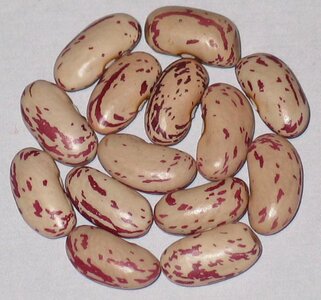jbrobin09
Garden Ornament
I do interplant with loads of other plants, and have lots of bees (when the dandelions bloom you can’t take a step without risk of stepping on a bee!) so maybe that’s why I don’t see crosses. Very interesting! I will keep that up.You might want to try spacing your rows at about 8 feet (244 cm) apart and in the middle 4 feet (122 cm) plant a row of flowers like Zinnias. The flower pollen might dilute the bean pollen enough to cut down on crossing a lot. I save my Zinnia seed for planting with beans.
I once was looking at a book in a library about bean seed production. It said that seed companies would space there bean fields at least a mile apart minimum to prevent crossing of two different varieties.




